How to Invest in IPO: the Beginner's Guide

15 minutes for reading
What is an IPO?
IPO is the Initial Public Offering of the stocks of the issuing company on the stock market. It's a process companies use to distribute their stock shares to the public for the first time. Through the IPO, companies enter the capital market, where anybody can become their investor by buying their stocks. An IPO can be conducted through the additional issuing of stocks, or through selling the stocks already at hand.
The goals of the IPO
Attracting new funds to the company has always been considered the main goal of an IPO; however, sometimes the IPO process is carried out by the issuers even if they don't need additional funds. In this case, the IPO is meant for the existing investors to receive money. The shareholders could also sell the stocks on the secondary market, but this would require a compromise with the buyers on the optimal price. Conversely, selling the stocks on the market allows to set their market price, and increase their liquidity; if the issuer does not need additional funds, the stock price is usually higher than on the secondary market.
Advantages of going public with an IPO
An IPO also helps attract high-class professionals to the company, which is essential for its development. Moreover, the issuer can reward its leading experts with options, thereby increasing their motivation. Publicity implies unveiling all the information about the company, so it may be said that an IPO is a way to enhance investor trust.
Another important fact is that the issuer can use the stocks as a means of payment in case of a takeover or a merger with another company, and can also issue additional stocks. All in all, as long as the company is interesting to investors, it can virtually “print money” and attract funds for its operations and development without having to take loans that must be repaid.
Another advantage of an IPO is the availability of unlimited funds, which the company can attract and use for its development.
Disadvantages of going public with an IPO
Every medal has two sides. An IPO entails a commitment to revealing full information about the company. What's more, if during the IPO more than 50% of stocks were thrown into the market, the initial owners risk losing control over the issuer. New expenses are incurred as a result of an IPO, such as the costs relating to the provision of information about the company’s activity to the regulatory authorities and the investors, and the costs involved in the processing of the IPO itself. In case of a failure, all the expenses are paid solely by the issuer. In perspective, a decline in the stock price may lead the investors to file class-action suits, accusing management of providing false information or misinterpreting the existing information. The market reality sometimes makes even the stocks of successful companies fall in price simply because the stock exchange indices have declined. As a result, the stock price is not always in compliance with the current position of the company on the market.
Types of IPO
There are two ways of entering the stock market. The first implies attracting agent services – the company signs a contract with an underwriter who will be preparing the IPO. The second way is direct listing – the company prepares the IPO internally. It's up to the IPO issuer to decide which method to choose to enter the stock market.
A direct listing is not very popular because it entails certain risks for the current shareholders, and because new stocks are not issued during the direct listing. In this case, the company sells the stocks that already exist.
First, let's have a look at a traditional IPO – the one carried out with the help of underwriters.
Underwriting
Underwriting on the stock market is a service of stock emission and public placement on the market, which is provided by financial institutions. Such organisations are called underwriters; most often they are banks and insurance companies.
Types of contracts between the issuer and the underwriter
When preparing for an IPO, the company has to decide who it will hire as an underwriter, and what type of contract will be signed.
There are two types of contracts:
- The first one is called Firm Commitment. The underwriter assumes all risks connected with the IPO. The company sells its stocks to the underwriter at an underestimated price, receives its money, and watches the IPO. The underwriter’s task is to make a profit by selling the stocks on the market at the highest possible price. In case of a failure, it is the underwriter who will be suffering losses since the company will already have received its money.
- The second type of contract is called Best Efforts. In this case, the issuer places a certain number of stocks on the market, and the success depends on whether investors will buy them or not. If the demand for the stocks turns out low, their price will start falling, and the company will consequently fail to attract the expected sum. The IPO will be called a failure, and the placement fee will eat up most of the funds raised by the sale of the stocks. The underwriter has no responsibility for the number of stocks sold on the market.
In order to choose which stocks to buy on an IPO, an investor should look at the companies’ underwriters.
If the company is famous and competitive, underwriters may compete over the right to place its stocks on the market. In this case, the issuer will pick up the biggest and the most popular underwriter, such as Morgan Stanley, Citigroup, Goldman Sachs, and other banks. One company can have several underwriters. Admittedly, an unknown company entering the market cannot afford the services of the major underwriters, so its choice will most probably fall on a more modest underwriting firm. Consequently, the risk of a failure will be much higher, as the investor interest in the company will probably be minimal.
Direct listing
The traditional way to enter the market is for the issuer to hire intermediaries to prepare the IPO papers and advertise to attract investors. The issuer has to pay for their expert services and watch the trading. A direct listing, on the other hand, means that the company does all the preparations internally without the help of intermediaries. The direct listing process (DLP) in this case is carried out as an internal project by a dedicated in-house team. The expenses will be 3-4 times less, but the process may take longer. After selling the stocks on the market, the advantages received by the company that went with the direct listing process are identical to those of a traditional placement. The difference is that the company does not issue new stocks, which means it does not attract funds.
Risks of direct listing
One of the main aims of an IPO is to attract public funds, which does not happen in the case of a direct listing. Then a question emerges: why does a company that does not need additional funds undergo an IPO?
After the 2008 crisis, the governments of the leading countries introduced the policy of Quantitative easing. This led to an increase in the volume of money in circulation on the market, with the amount of investor money growing accordingly. Consequently, it has become difficult for companies to attract private funds for their development, and there is little reason for IPOs.
For example, When Slack Technology (NYSE: WORK) entered the market via a direct listing in June 2019, it had around 900 million USD of free funds, and was in no acute need of money. In this case, the aim was to enhance the liquidity of the stocks and sell them at the market price by the shareholders’ wish. As long as the company was financially stable, it did not fear the risks of a direct listing, which are definitely present.
First, during the direct listing, there is no Lock-up period, which means the investors have the right to sell the stocks on the first day of trading. The Lock-up period is set by the company for 90 to 180 days to prevent the investors from lowering the stock price by selling the stocks.
In the case of a standard IPO, the investors can buy the stocks before the IPO at a discounted price. Setting a Lock-up period is a measure the company takes to prevent unscrupulous investors from buying a big number of stocks before the IPO and selling them immediately, which would provoke a serious decline in price and the failure of the IPO.
Another risk is volatility growth because the interest of investors is tested on the market. In the case of a normal IPO, the underwriter studies the interest drawn to the company beforehand and forms the stock price accordingly; while in the case of a direct listing, the price is formed based on the information about bargains on the secondary market. What's more, underwriters act as the buyers of the stocks if the price starts declining. Their actions are clearly visible on the chart as a support on a certain level, restoring the demand and the stock price.
There are, of course, exclusions. Let's take Facebook's IPO as an example: the pressure on the stocks was so strong that the underwriter ran out of resources, which resulted in the stock prices decreasing by 50% against the initial IPO price.
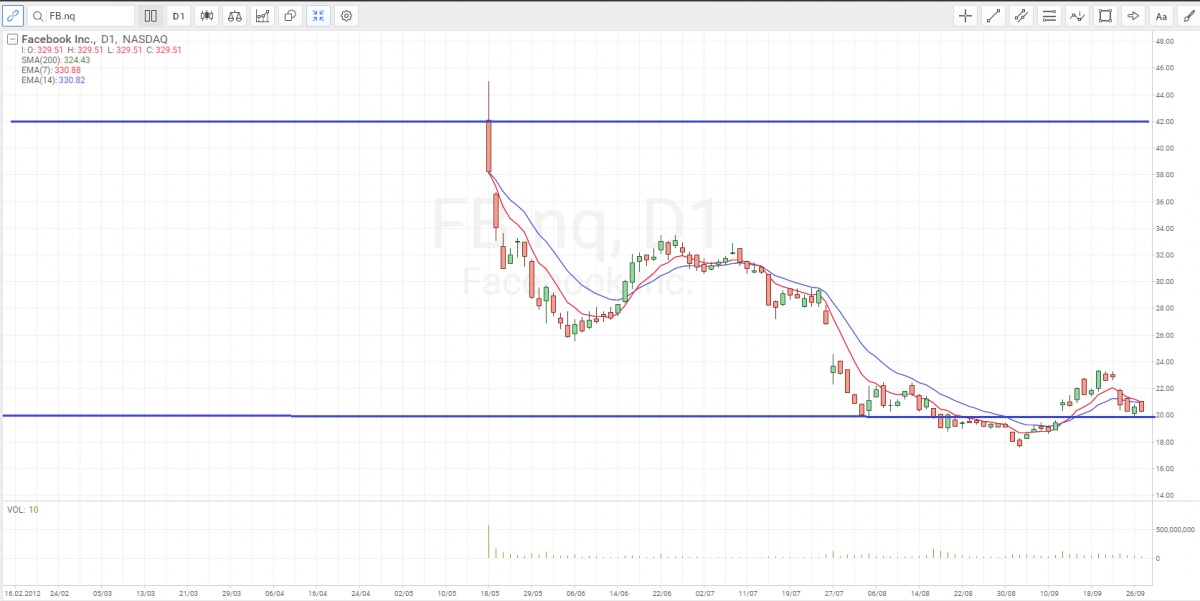
Road Show
Although direct listing is not totally uncommon, it is not common either. So, one way for ordinary traders to make a profit on the IPO is through the growth of stock prices, since, in the case of traditional IPO, there is no chance whatsoever of making a profit on the decline of the price due to the Lock-up period set. Conversely, the direct listing method is chosen by strong companies, so it may be risky to sell their stocks.
There are two ways of making a profit on the stock price growth:
- The first and the easiest way is to buy the stocks on the actual day of the IPO, regardless of which type of IPO the company has chosen.
- The second way implies buying stocks during the Road Show – the period of preparation for the IPO when the underwriter is active.
A Road Show is a series of meetings with potential investors and analysts in countries with developed stock markets. The underwriter advertises the issuer through prepared presentations, speaking about the issuer’s financial state and their development potential. In addition, the underwriter involves mass media to attract as much attention as possible, in an attempt to gain interest from investors as well as good recommendations from analysts.
How to invest in an IPO
During the Road Show, investors are offered the stocks at a discounted price, which is tempting, especially if the company is a large one. Nevertheless, an ordinary trader who only has 10-50 thousand USD on their account cannot afford buying stocks directly from the underwriter, as the latter focuses on working with those investors who own more than 1 million USD on their accounts. However, there is a way around this: there are agent companies that gather the applications of investors who are interested in buying the stocks of a company through an IPO, and thereafter submit an application to the underwriter under their own name. But this is just in theory because, in practice, the underwriter does not always fulfill such applications, selling 70% of the demanded 100 thousand stocks.
That's why the one of the best ways to participate in the IPO is to buy the stocks before the offer.
If for some reason a trader did not manage to buy the stocks before the placement, or they did not want to do so because of the Lock-up period, they can always buy the stocks on the actual IPO day.
During the last week of June 2019, seven issuers carried out an IPO on the NASDAQ, and only two of them closed the session with a loss on the first day of trading; the stocks of one company stopped at the opening level, while the stocks of the remaining four issuers' return on equity profit went from 0.5% to 35%.
Thus, even a “blind” purchase of stocks may bring you profit on the day of the IPO. However, it's still advisable to analyse the open sources of information about the company. The underwriter of the issuer is particularly important: the larger and more famous the underwriter, the higher the probability of a successful IPO. The amount of net profit is also important: it is not uncommon that even large companies enter the market without net profit, and not paying out dividends. Their only source of income is the growth of the stock price, which may hinder investor interest in the company.
Also, the number of stocks planned for the offering can influence the success of the IPO. Too big a number of stocks offered can decrease their price on the first day of trading. A company's number of stocks should be comparable with the number of stocks of similar companies already on the market in the same segment.
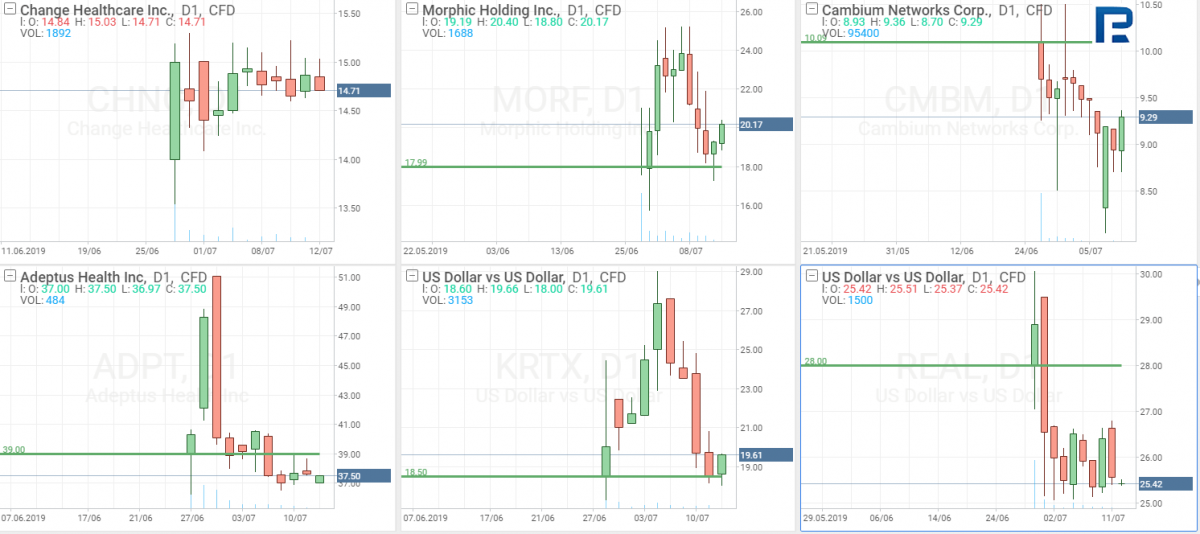
So, the second way of investing in IPO is buying stocks on the actual day of the IPO.
The investors that have bought the stocks during the Road Show cannot sell them during the IPO; so, they become mid-term investors obliged to keep the stocks in their portfolios for several months. The underwriter works with investors who have more than 1 million USD invested. If these experienced market players choose to buy certain stocks regardless of the Lock-up period, it would be wise for ordinary investors to consider following suit by purchasing the stocks of the same companies and keeping them in their portfolio for several months. Of course, it is still necessary to analyse the information about the issuer: its underwriter, its financial state, and development potential. The indirect indicator that's the easiest to analyse is the starting price of an IPO.
For example, 23 companies carried out IPO in May 2019; only eight of them are showing negative return on equity, with only one company out of those eight having an IPO price of more than 20 USD.
| Company | IPO price (USD) | Evaluation (million USD) | Return on equity (%) |
|---|---|---|---|
| Red River Bancshares Inc (RRBI) | 45.00 | 27.0 | -12 |
| Uber Technologies Inc (UBER) | 45.00 | 8100.0 | +4,7 |
| Parsons Corp (PSN) | 27.00 | 500.0 | +26 |
| Beyond Meat Inc (BYND) | 25.00 | 218.8 | +371 |
| Axcella Health Inc (AXLA) | 20.00 | 71.4 | +48 |
| South Plains Financial Inc (SPFI) | 17.50 | 59.2 | 0 |
| Cortexyme Inc (CRTX) | 17.00 | 75.0 | +105 |
| Mayville Engineering Co Inc (MEC) | 17.00 | 106.3 | -14 |
| Luckin Coffee (LK) | 17.00 | 510.0 | -26 |
| TransMedics Group Inc (TMDX) | 16.00 | 91.0 | +27 |
| Sciplay Corp (SCPL) | 16.00 | 352.0 | -28 |
| Fastly Inc (FSLY) | 16.00 | 180.0 | 0 |
| NextCure Inc (NXTC) | 15.00 | 75.0 | +8 |
| Milestone Pharmaceuticals Inc (MIST) | 15.00 | 75.0 | +25 |
| Avantor Inc (AVTR) | 14.00 | 2900.0 | +24 |
| Bicycle Therapeutics Ltd (BCYC) | 14.00 | 60.7 | -40 |
| So-Young International Inc (SY) | 13.80 | 179.4 | 0 |
| Yunji Inc (YJ) | 11.00 | 148.5 | -23 |
| Sonim Technologies Inc (SONM) | 11.00 | 39.3 | +14 |
| Trevi Therapeutics Inc (TRVI) | 10.00 | 46.7 | -20 |
| Trevi Therapeutics Inc (TRVI) | 10.00 | 40.0 | +14 |
| Ideaya Biosciences Inc (IDYA) | 10.00 | 50.0 | -41 |
| Rattler Midstream LP (RTLR) | 10.00 | 333.3 | +11 |
| TOTAL return on equity | +474 |
So, having bought stocks in May 2019 at an IPO price of over 20 USD, one could make a profit of 437.7% on the return on equity.
Of course, there are such companies as Beyond Meat Inc (NASDAQ: BYND) , which stocks yield a colossal profit; however, this is just a nice compliment to those who use IPO for making money.
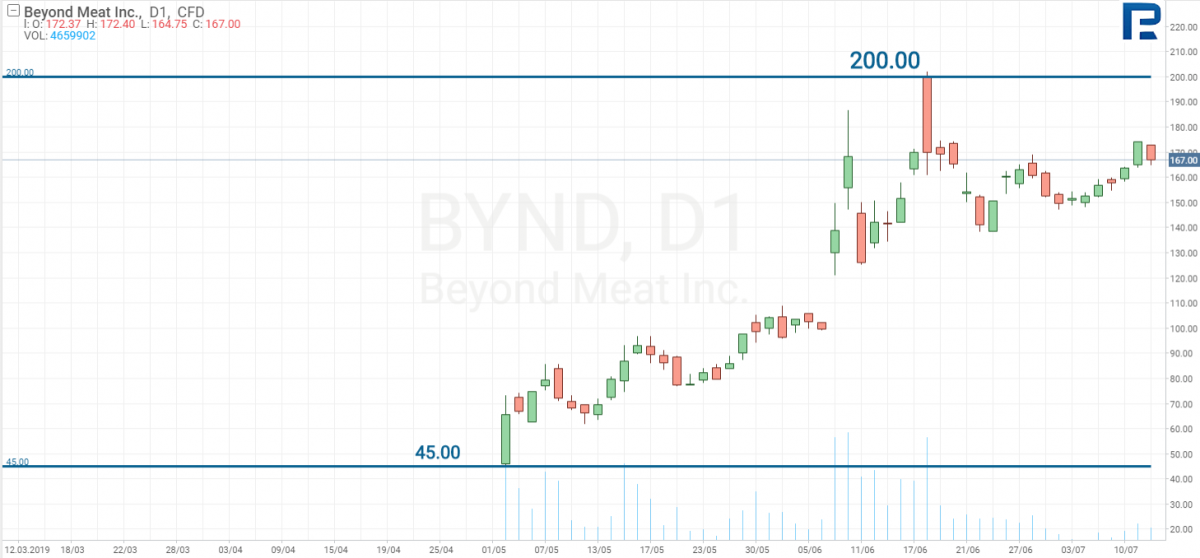
in 2018 a Canadian company, Tilray (NASDAQ: TLRY) , demonstrated an even higher return on equity. In just one month, the price of its stock grew from 23 USD to 300 USD, yielding a return of more than 1,200%.
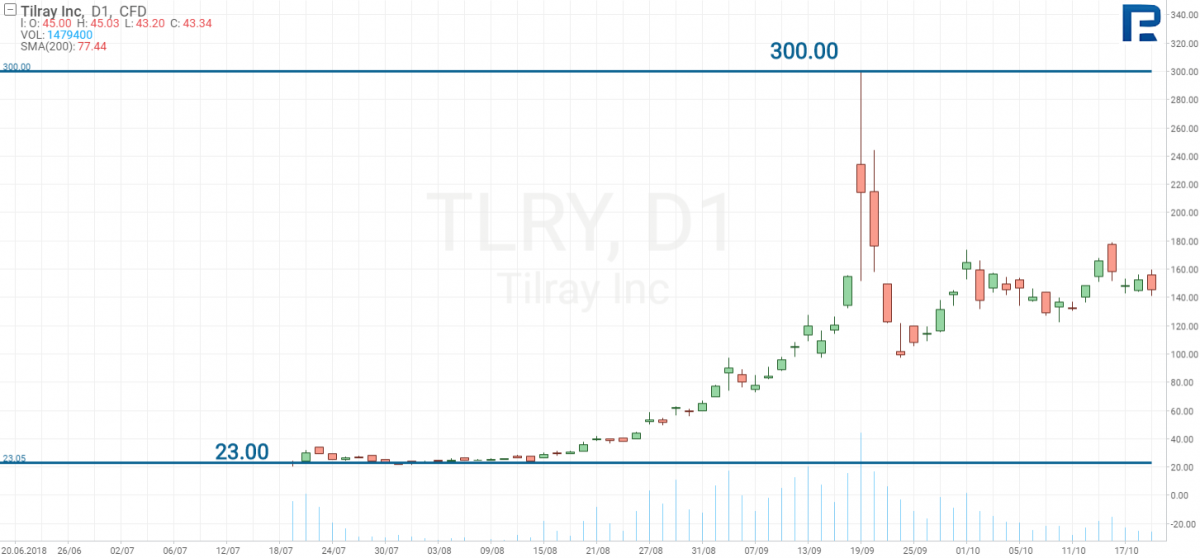
Closing thoughts
An IPO provides individual investors the opportunity to participate in the future of a company and make a profit on it. Everything depends on choosing the right company: once this is done, the investor only has to decide on the type and the period of investment. Statistics have shown that the companies that are most likely to yield a positive return on equity are the ones that hire famous underwriters, have good potential for development, demonstrate encouraging financial results, and set a high IPO price. In some cases, investments yield super profit, but this is available only to the shareholders that take part in the IPO.
* - Past performance does not predict future returns.




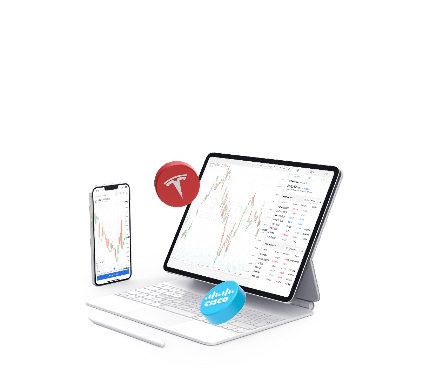
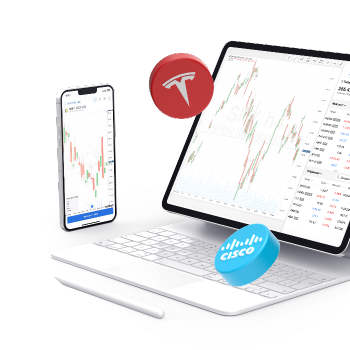
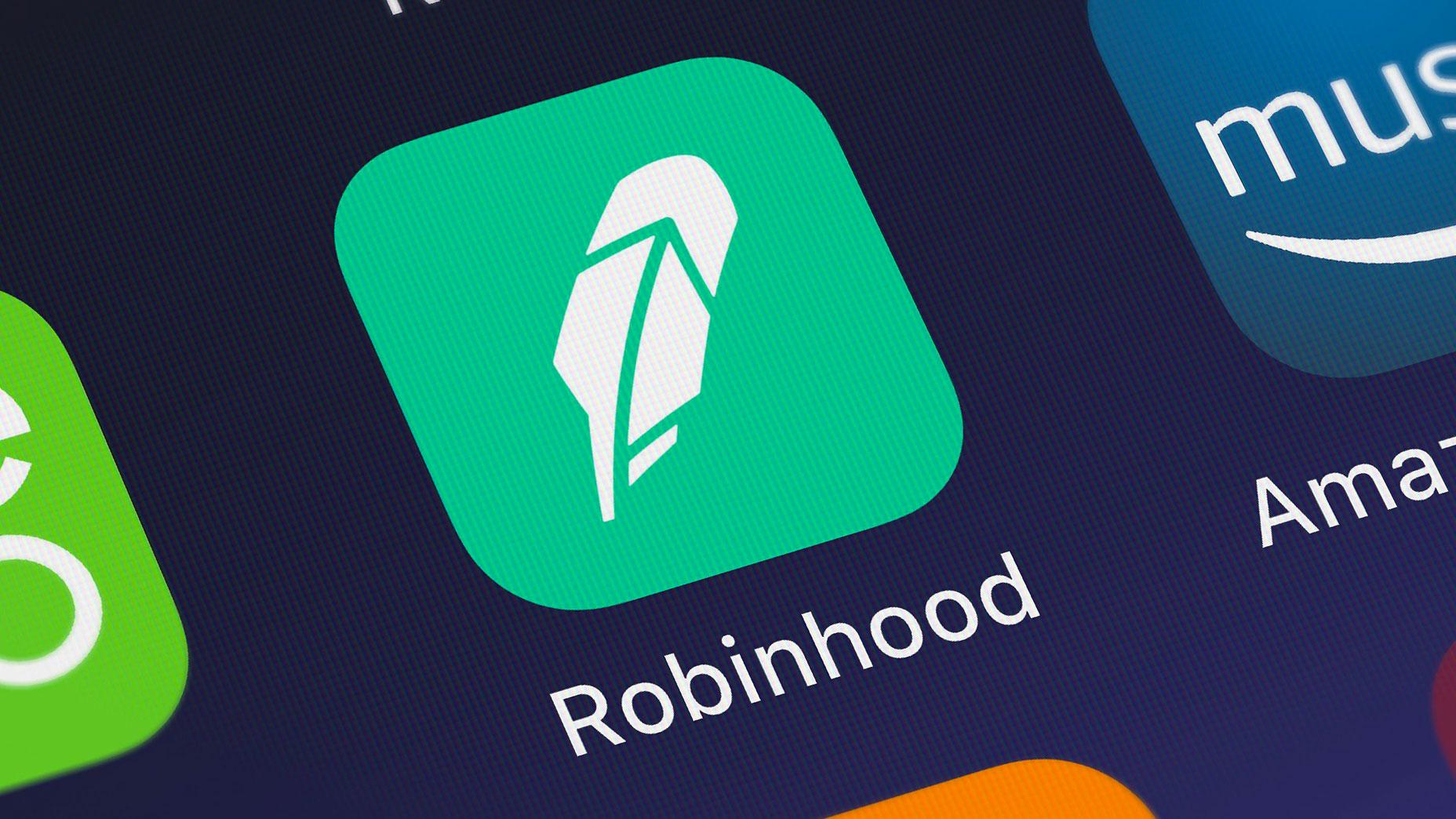







 are complex instruments and come with a high
are complex instruments and come with a high  of losing
of losing  rapidly due to
rapidly due to  . 65.68% of retail investor accounts lose
. 65.68% of retail investor accounts lose  when trading
when trading  with this provider. You should consider whether you understand how CFDs work and whether you can afford to take the high
with this provider. You should consider whether you understand how CFDs work and whether you can afford to take the high